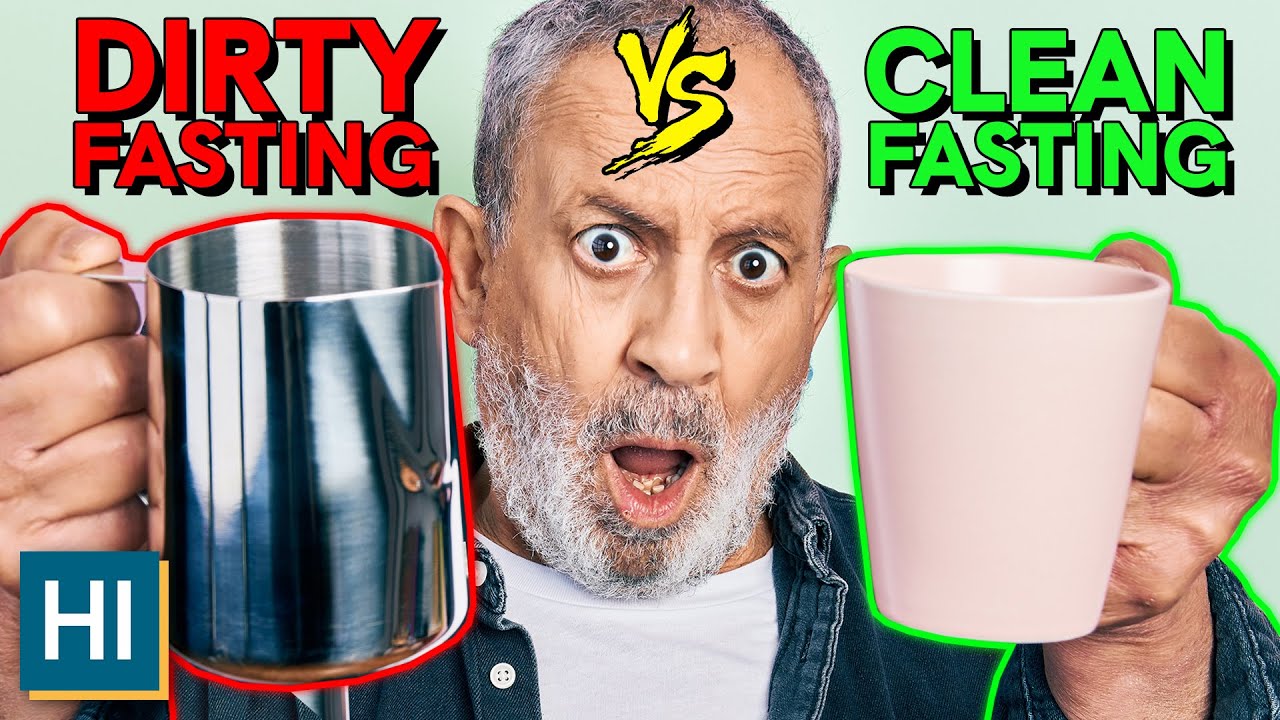[ad_1]

by Matt Weik, BS, CSCS, CPT, CSN
Many healthy freaks sing the praises of intermittent fasting. This is a practice of having a specific window of the day for fasting. It allows our body to use up its sugar stores to start burning fat. However, if traditional intermittent fasting isn’t providing the desired results, an alternative called “dirty fasting” might be worth exploring.
Dirty fasting involves consuming a limited number of calories, ideally staying below 100 calories, during the fasting window. For some individuals, this approach offers a more manageable way to navigate fasting periods.
In this article, we will dive deeper and discuss the benefits of dirty fasting and everything you should know about it.
Disclaimer: This article is for informational purposes only. It is recommended that you speak with your doctor before making any changes to your nutrition or weight loss program.
What is Dirty Fasting?
Dirty fasting is a different take on intermittent fasting in which you can consume more foods during the otherwise clean fasting window. These small calorie amounts usually won’t break your fast, so you’re technically still fasting.
Unlike clean or regular fasting, where you don’t eat any calories, dirty fasting is about having a tiny bit of nutrition, usually about 100 calories, during your fasting time. It’s a bit more flexible, making it a good choice if you’re new to intermittent fasting and want some room for adjustment as you start.
Is Dirty Fasting Good For You?
Yes, dirty fasting can be effective for weight loss and overall health, just like clean fasting. The reason is simple — when you dirty fast, you tend to consume fewer calories than you would on a regular day without time restrictions.
In essence, dirty fasting works similarly to other types of intermittent fasting by helping cleanse your cells and promoting autophagy, which is when your body gets rid of damaged cells. This approach allows you to maintain weight loss more easily over time compared to eating larger amounts during traditional intermittent fasting.
Moreover, by allowing some calories on restricted days (usually around 400-600 calories per day), you can avoid the usual hunger pangs that might make it tough to stick to intermittent fasting. As a result, dirty fasting can be a good choice for those who want to try intermittent fasting but still prefer to include real food in their diet.
What Does This Look Like in Practice?
Instead of having just one or two big meals each day, dirty fasters might opt for three or four smaller meals. For instance, rather than having a substantial dinner, they might have a light lunch like soup or salad, followed by a small snack like nuts, half an avocado, or low-calorie options to keep them satisfied until dinner. These foods provide minimal calories but still offer essential nutrients needed for the body to function properly.
Different Types of Dirty Fasting
There are four types of dirty fasting: intermittent, extended, alternate-day, and periodic.
- Intermittent fasting is when you usually eat for five days out of the week and fast for two. This denotes that you would eat all your meals within an 8-hour period and then fast for the rest of the 16 hours.
- Alternate-day fasting is when you usually eat one day, and then the next day, you fast. The cycle then repeats.
- Extended fasting is when you go without any meals for 24 hours or more. This can be done once per week or many times a month.
- Periodic fasting is when you generally consume food for around 2-4 months and then fast for 1-2 weeks. You can do the fasting multiple times throughout the year.
What To Eat and Not Eat During Dirty Fasting?
When you’re practicing dirty fasting during your eating window, consider including these foods:
- Non-starchy vegetables: Broccoli, leafy greens, green beans, cauliflower, mushrooms, peppers, and others. They provide essential vitamins, minerals, and fiber, helping to control hunger.
- Fresh fruits: Berries, citrus fruits, kiwi, cherries, and similar options.
- High-antioxidant foods: Such as sea vegetables, cocoa, herbs, and spices.
- Probiotic foods: Yogurt, kefir, sauerkraut, and cultured vegetables.
- Healthy fats/oils: Olive oil, coconut oil, MCT oil, nuts, and seeds.
- Protein sources: Free-range eggs, grass-fed meats, and wild-caught fish.
- Bone broth: It can be beneficial for gut healing.
- Hydrating beverages: Water, herbal tea, seltzer, coffee, zero-calorie drinks sweetened with stevia, and most types of teas.
What to avoid during dirty fasting:
- High-calorie processed foods: Especially those that are easy to overeat.
- Sugary beverages or artificial sweeteners.
- Processed meats and cheese.
- Junk food: Such as pizza, burgers, fried foods, and fast food.
- Sugary cereals, bars, or desserts.
Remember to stay well-hydrated, and consider options like water, coffee, tea, and bone broth to maintain your fluid intake during fasting.
[ad_2]
Source link


